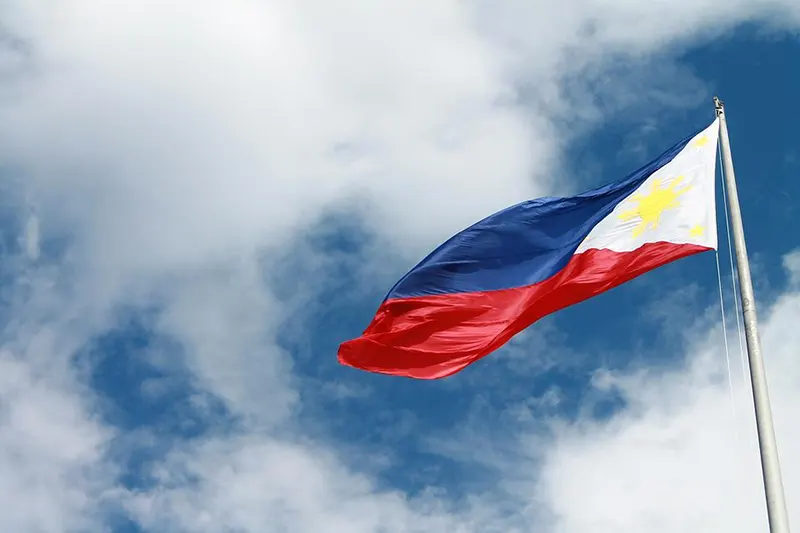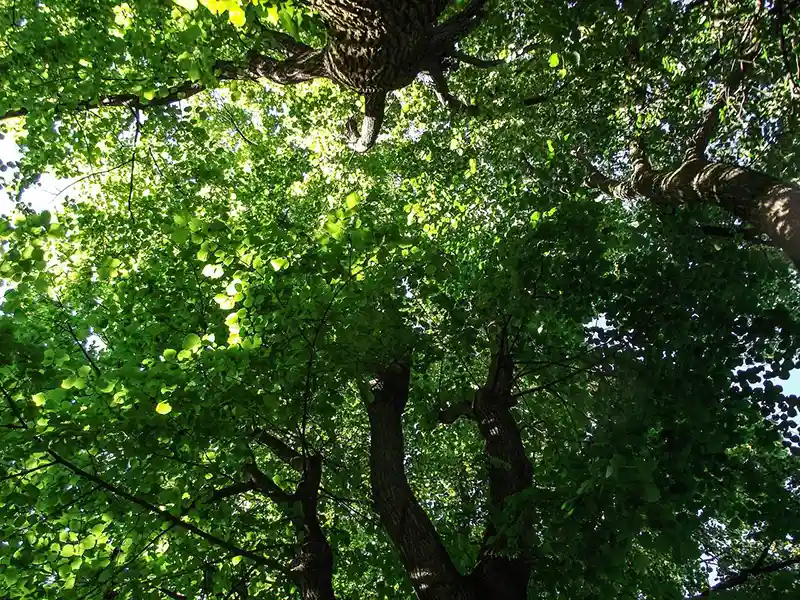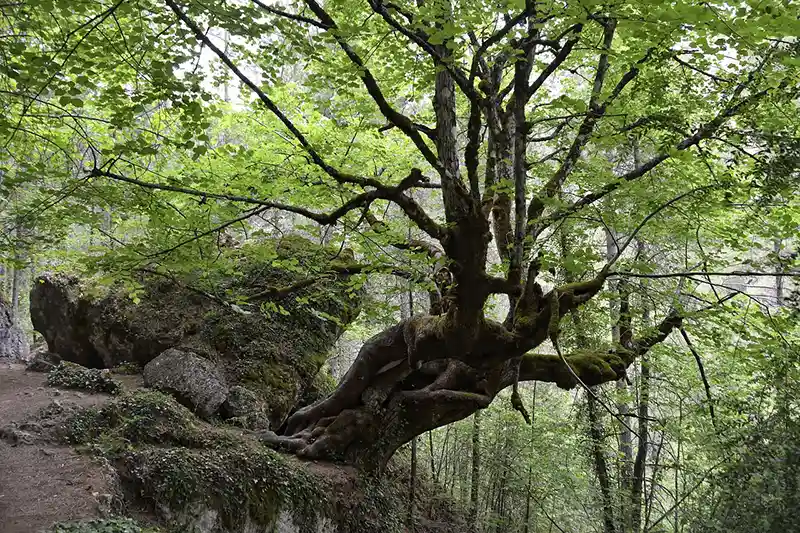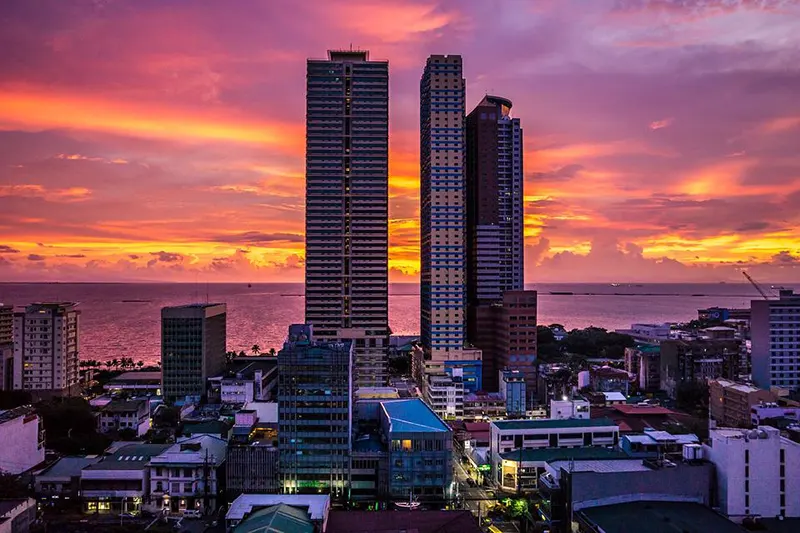Narra, the National Tree of the Philippines
The Narra tree, known by its scientific name Pterocarpus indicus, has been the national tree of the Philippines since 1934. It is a strikingly beautiful tree with a purplish hardwood exterior. While it may not be known to many other countries, there are some that grow it as an exotic bonsai.
In this article, we’ll discuss the Narra tree’s importance to the Philippines, what it means to Filipinos, where else you can find it, and how to care for it as a bonsai. We’ve specifically chosen this country as we’ve found many readers from there visiting Bonsai Alchemist. As a sign of appreciation, we present this information for you.
Why Narra Tree Is The National Tree Of The Philippines
Governor-General Frank Murphy was the government executive of the Philippines at the time when Narra was declared the national tree of the Philippines in 1934. It’s a strong hardwood tree that resembles the Filipino’s desire to attain freedom and independence, especially while being governed by other states in the past. It also has several economic uses, but you need a permit if you want to cut a Narra down for any reason.
What Does Narra Symbolize In The Philippines?
For the most part, the Narra tree symbolizes strength, endurance, persistence, and durability. It resembles the Filipino spirit, specifically the strength of character, while fighting for freedom and independence. You can see it in the strong hardwood and the height of the tree, which stands tall against the strongest elements.
What Is Narra Tree Known For?
The Philippines has several Narra trees in different forests, namely, Mindanao, Bicol, and the Cagayan Valley. It’s part of the bean or legume family, which is why you’ll see large seed pods covered with round, hard material. Scientists are still debating whether the two different forms are actually the same type.
The natural habitat of the Narra tree is by rivers, coastlines, and creeks, which is why it grows so well in the Philippines. It’s mostly known for being an ornamental tree, even though there are several uses and products from the fruit and wood. Filipinos even use it for medicinal purposes to combat illnesses and conditions, such as menstrual cramps, leprosy, arthritis, flu, and diabetes.
Is the Narra Tree Grown Anywhere Else?
While the Narra tree is the national tree of the Philippines, it also grows in other countries. The top locations for this species include northern Australasia, southeastern Asia, the western Pacific Ocean islands, southernmost China, Papua New Guinea, Cambodia, Indonesia, East Timor, Malaysia, the Ryukyu Islands, Thailand, the Solomon Islands, and Vietnam.
What you need to keep in mind is that the tree is seen as exotic or protected in many of these countries. In Vietnam, it’s seen as nearly extinct. In Thailand, there are two locations where it’s the provincial tree, namely, Chonburi and Phuket. In many locations like these, it’s forbidden to cut down the Narra tree.
Since you don’t really find this species in the United States and the United Kingdom, you won’t often find it as a bonsai. However, some growers have made a plan to export cuttings or small trees so that they could have the Narra tree in their homes. It’s a rare treat if you locate one.
What Does The Name Narra Mean?
The word “Narra” means different things in different languages. It’s even used as a girl’s name in some countries, such as the Celtic culture. Since we’re dealing with it as the national tree in the Philippines, Narra means “a strong family of redwood Mahogany trees used for construction and furniture” to the Filipinos. Another familiar term for it is Narrawood, but it’s less popular than just saying Narra.
What Is Narra Tree Called In English?
There are several common names for Pterocarpus indicus, depending on who you ask. Some of them include Amboyna wood, Papua New Guinea rosewood, Malay padauk, Andaman redwood, and Burmese rosewood. If you ask a Filipino, they’ll refer to it as the Philippines Mahogany, Asana, or simply Narra.
What Are the Products Of Narra Tree?
The Narra tree is popular in the Philippines for its hardwood. Many Filipinos use it in construction and manufacturing, especially when it comes to cabinets and other furniture. Some other products include musical instruments, cartwheels, carvings, tables, and more. The amboyna wood can also be finely sliced to create a decorative veneer.
There are also several medicinal uses of the Narrawood. Besides the ones mentioned above, others include treatment against bladder issues, mouth sores, prickly heat, orchestra diseases, syphilis, headaches, diarrhea, dropsy, boils, and ulcers. However, most of these medicinal uses are found more in Malaysia than in the Philippines.
Finally, it has an environmental benefit. It provides a rich source of pollen for bees, which helps in the production of honey and pollinating the flowers, so more seeds are produced. The roots stabilize the soil and aids in the fertility of the surrounding ecosystem. The fruit are also sold commercially and serve as a source of export income.
How Do You Identify Narra?
There are several factors you can use to identify a Narra tree. We’ll break it down into different sections so it’s easier to visually digest:
- Bark/Wood: The wood is slightly purple in appearance upon closer inspection. It has a rosy scent, which you’ll have a better chance of detecting when you break off some of the bark.
- Leaves: The leaves are imparipinnate and alternate, stretching about 1 inch long with a deep green hue. There are up to 11 leaflets per leaf, and they have broad ovate shapes. The final leaflet is usually larger than the others.
- Flowers: The flowers are branched clusters that you’ll find on upper leaf axils. They’re usually bright yellow in color and produce a lovely scent. You’ll spot five petals on each of the flowers.
- Seeds: Each fruit is in a disc-shaped pod, where the seed is in the center with flattened edges all around it. The appearance is similar to the Jacaranda, except that the Narra pod only has one seed instead of several.
- Other visual aspects: It loves clay or sandy loam soil, and you’ll usually spot the tall trees close to water sources, such as rivers and the seashore. Moths and caterpillars enjoy feeding on the leaves, so their presence is another hint.
Which Is Better; Narra Or Mahogany?
While the Narra is also known as the Philippine Mahogany, it’s not actually a real mahogany tree. The chief difference is that mahogany wood is cheaper to acquire than Narrawood. You need to remember that special permission is needed to chop the national tree down. Even though constructors don’t mind following the process, you’ll probably pay more to have furniture made from it than mahogany, especially if you’re importing it from a different country.
Image courtesy of Cerlin Ng | License Details
Can You Bonsai A Narra Tree?
Despite the protection in place for the Narra tree, there are some stores and people that have it as bonsais. You can see many images online and on social media showing how they’ve grown them from seeds and cuttings. The fruit pods and flowers put on a wonderful display in summer and spring.
While there are laws in place to prevent the cutting down of Narra trees, you can still take small cuttings to grow them as bonsais. We’re sure this is appreciated where the species is near extinction or non-existent, such as Vietnam, Thailand, and the western lands.
How To Care For A Narra Bonsai Tree
We didn’t want to leave without showing you how to care for a Narra bonsai tree. After all, that’s what Bonsai Alchemist is all about. Here are some quick tips for looking after one, but you can also check out our extensive bonsai tree care guide.
Sunlight
The Narra tree loves plenty of sunlight. It will thrive if you can supply at least 4 to 7 hours, even in the afternoon. It’s best to put your bonsai outside in your garden to maximize the light intake, but it will manage in your home as long as it’s by a window with plenty of sunlight.
Don’t put it on a desk where there’s little light. The Narra bonsai will slowly die, even if you don’t see signs of it at first. It builds that formidable strength and stature from the light it absorbs. You can bring it inside for winter when it’s too cold in your garden.
Size and Maintenance
Since the Narra tree grows slowly, we recommend you just let it spread and expand during spring. Wait until it flowers in summer, and then you can start trimming and removing branches or leaves towards early autumn. If you see any branches crossing or looking diseased, you should remove them immediately.
It helps to remember that Pterocarpus indicus is a tall, sturdy tree by nature. Your bonsai will want to grow high with several branches along the trunk. Don’t prune too many of the branches and foliage off, as you’ll want it to appear majestic.
Water
When it’s spring and summer, the Narra tree becomes quite thirsty. You should water it in the morning before the sun rises or in the evening, but not in the hot afternoon. We recommend the morning so that it has enough liquid for the day. You can even water it twice a day, as it loves wet roots.
It will still require some watering in autumn, but you’ll need to slow down in winter when it’s cold. The bonsai won’t drink as much water as before, and you don’t want mold or root rot to form. Check with your finger to see when the soil becomes dry.
Fertilizer
You won’t have to worry too much about feeding the Narra tree. Even in spring and summer, it fixes nitrogen in the soil, which means it doesn’t really need supplements. If you want other macro or micronutrients, we recommend you use a liquid fertilizer as the roots grow deep into the pot.
You need to avoid feeding this bonsai completely in autumn and winter. Giving it too much fertilizer will cause the leaves to turn yellow or fall off when it shouldn’t, crippling the tree’s health.
Soil and Container
Since the Narra tree grows tall and strong, you’ll need to account for the heavy weight of your bonsai. Buy a bonsai pot that’s not too shallow or deep, but has sufficient weight not to fall over when filled. Also, we recommend a color that matches the purplish hue of the wood.
You can use any standard bonsai mix that drains well. If you’re having an issue with the water draining too slow, be sure to add a lower level of rocks, such as pumice or perlite. When you repot the Narra tree, make sure you keep it in shade for a few days until the roots settle.
Styles and Designs
You’ll want a majestic style for your Narra bonsai tree. The best option is a formal upright with branches at different levels. You can also go for a canopy design, but we like the first choice more. It doesn’t take too well to unnatural styles, such as cascading.
If you really want to try something new, you can opt to make a literati bonsai. You can play around with different designs that aren’t standard to bonsai techniques. In this way, you can pull off a stunning shape that no one else will have in their homes.
Final Thoughts
The Narra tree is such a wonderful species and should be honored across the world, not only in the Philippines. As a national tree, it stands as a monument to an outstanding culture, presenting the country’s character. We hope you’ve enjoyed the insight into this gorgeous species.







